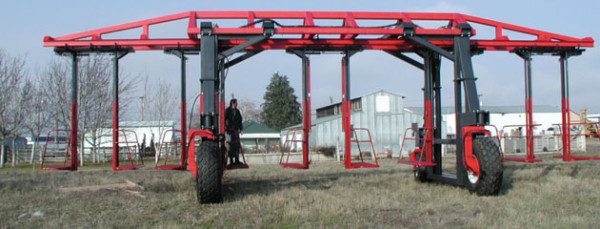
Oct 4, 2010What will apple industry look like a decade from now?
So, what will growing apples be like in the year 2020?
Demand shouldn’t be a problem. Earth will contain 7.6 billion people by then; the United States 341 million. Lifestyles will continue to change. Obesity and diabetes will still be problems, and healthful food like apples will be more popular than ever, according to Steven Muro of Fusion Marketing.
Muro was one of the speakers for “Apples 2020 – The Future is Here!,” a presentation held during the U.S. Apple Association’s Apple Crop Outlook & Marketing Conference in Chicago. With three other speakers, he predicted what the apple industry might look like 10 years from now.
Growers
Jim McFerson, manager of the Washington Tree Fruit Research Commission, described what an apple grower might be working with a decade from now. His (or her) trees will be planted according to a high-density growing system’s requirements – something with a two-dimensional fruiting wall. The latest genetics and best rootstocks will be used, of course. Hopefully, he’ll be growing a breakthrough cultivar like Honeycrisp or SweeTango or some other new release.
The grower of the future will thin his apples and blossoms mechanically. Penn State researchers are experimenting with a mechanical thinner, and there are other projects going on in other places right now, McFerson said.
“It’s a no-brainer on stone fruit,” he said. “Some of the machines that are out there now and available really work well.”
By 2020, a grower might be able to tell his fruit when and where to abscise.
“I think genetically we can produce self-abscissing fruit,” McFerson said. “There’s nothing to me that says we can’t, with a genomics approach, tell a plant when to abscise and where to abscise.
“It’s not happening right now, but if we’re not doing the research right now to make it happen in the future, it won’t happen.”
He also touted Internet-based decision-assist systems. A grower will be able to go online to get the authoritative, science-based information he needs to make the right orchard management decisions at the right time. Despite recent trends, the Internet doesn’t have to be all about social networking, he said.
“Sometimes, you just want to know when to spray.”
A decade from now, a grower might not be using tower sprayers, and probably won’t be pumping Guthion and similar materials through airblast sprayers. The industry is moving toward softer materials and things like biocontrols and integrated pest management, McFerson said.
Sustainability will be the buzzword in 2020, as it is now. Roger Pepperl, marketing director for Stemilt Growers, discussed the Washington orchard’s Responsible Choice program, which could be considered a model for future sustainability programs. For more about Responsible Choice, visit www.stemilt.com/ResponsibleChoice.
Buyers
Thanks to high-density systems and modern growing techniques, the grower in 2020 will probably yield a lot of apples. Despite recent hype, he won’t be able to sell all of them at the local farmers’ market. That’s where large customers like McDonald’s Corp. come in.
Todd Silberg, a supply chain manager for McDonald’s USA, said apples have done well for the fast-food chain in the last few years.
McDonald’s went out on a limb in 2004, when it added Apple Dippers to its U.S. menu. When you own 14,000 restaurants in the United States (31,000 in the entire world), doing anything new requires a lot of execution, but the effort was worth it, Silberg said.
A number of items on the McDonald’s menu now contain apples – and those items are popular with adults as well as children. Despite the struggling economy of late, McDonald’s continues to do well. The chain’s Dollar Menu – which includes Apple Dippers – has helped with that, he said.
Apples have many positive attributes that McDonald’s appreciates. They’re popular: More than 90 percent of consumers purchased apples in the last 12 months. They’re durable and portable. They’re also universal. You can use apples in a variety of meals, unlike other products.
“You can’t put beef in a dessert,” Silberg said.
Consumers look to McDonald’s for consistency in their food. They also want convenience. Pre-cut apples are a good option for them – but the appearance and taste of the apples has to be consistent.
Silberg said it would be nice for McDonald’s if producers could grow an apple without any skin, or if the restaurant chain could use Honeycrisp slices in its Apple Dippers, but the industry isn’t there yet.
Will it be there by 2020?
– By Matt Milkovich, Managing Editor














